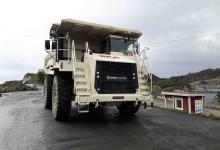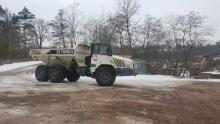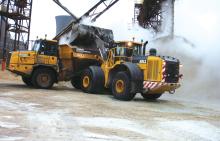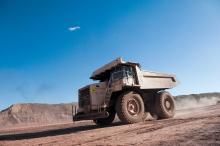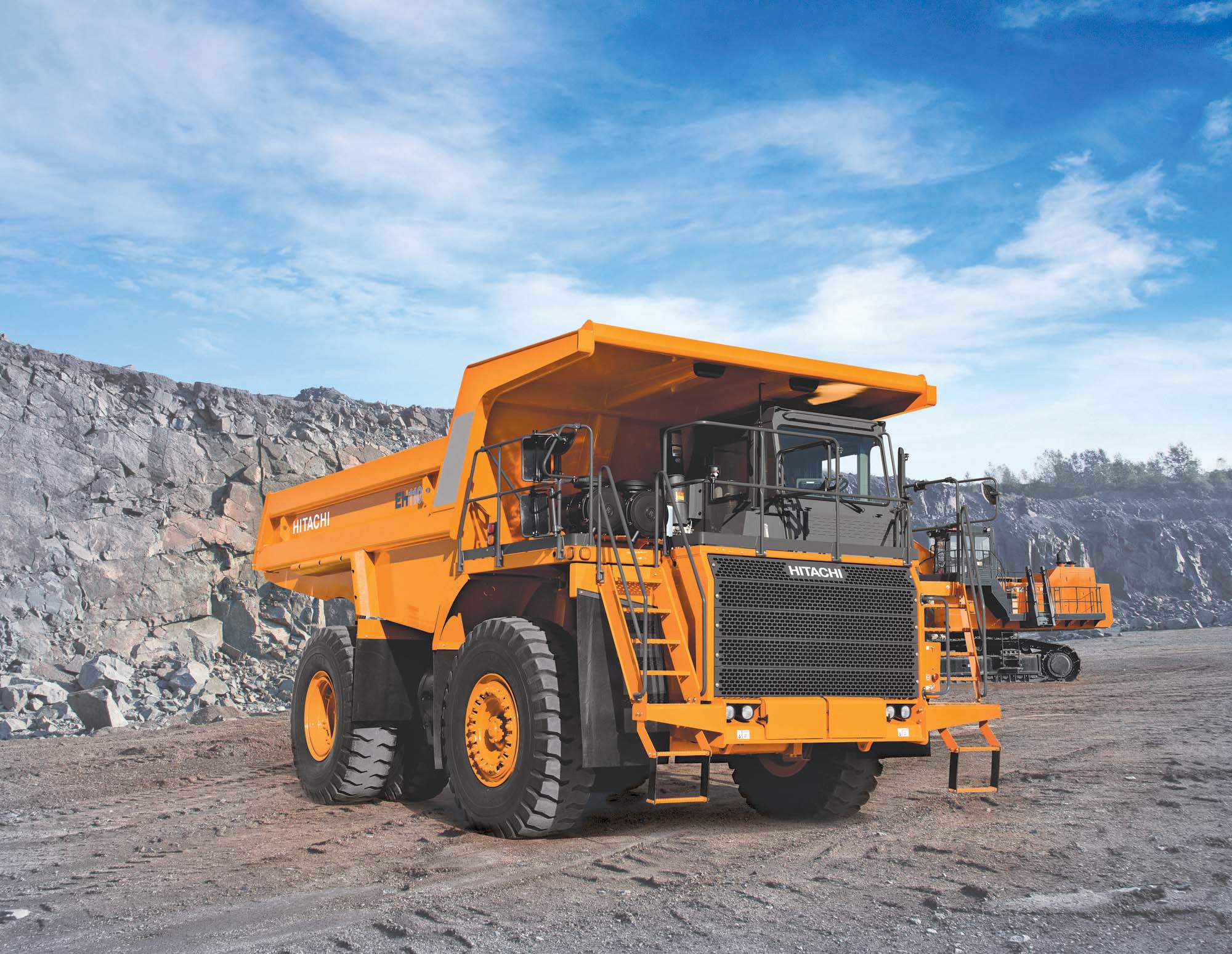
Yunnan Phosphate Chemical Group (YPC) is using more than 40 Volvo construction machines to drive its mineral operations in China.
A beautiful mountain area in the far south-west of China, Yunnan shares borders with Myanmar, Laos, and Vietnam, and not only does it boast the largest variety of plant life in the country, it has the biggest reserves of aluminium, lead, zinc and tin in China, as well as major reserves of copper and nickel.
YPC is the largest producer of highly-concentrated phosphate fertiliser in Asia, and the second biggest in the world.
Founded in 2001 it is a wholly-owned subsidiary of the Yuntianhua Group, based in Kunming, the capital of Yunnan. The phosphate fertiliser is widely used in a wide range of applications including; medicine, food, matches, dyes, sugar, ceramics and many other products.
The majority of phosphate rock in China comes from the YPC’s Yunnan, Guizhou and Hubei mines, and these regions produce nearly all (98%) of the national total, producing 8.2 million tonnes of raw phosphate ore, 8.28 million tonnes of scrubbed dressing ore, 8.5 million tonnes of phosphate concentrate, 100,000tonnes of ore-dressing chemicals and 10,000tonnes of yellow phosphorus a year.
To extract the minerals YPC owns five sets of scrubbing equipment and three sets of flotation equipment. A flotation process is used where turbulent water systems, chemicals and air bubbles are used to bring the phosphate particles to the top of the water where they are then skimmed off.
YPC is a leading Pioneer in the modernisation of China’s largest open-air phosphate mines, and it hopes to maximise phosphate rock resources and achieve economic efficiency as increasing resources has become a national issue. (Some phosphate minerals cannot be recovered through the current manufacturing process.)
At the Jinning mine, Volvo Construction Equipment (
“Our Volvos bear the brunt of the work and help ensure safe operation on site,” says Zhangm, manager of the transportation team.
“A team of 40 A40E articulated haulers carry out transportation duties on site, along with three Volvo EC700BLC excavators that extract the mineral. Two separate teams of 50 workers run auxiliary operations, while four haulers work for between 16-17 hours every day. We are satisfied with our Volvos, which have laid good foundations for our production goals.”
To improve operations and increase efficiency, Volvo CE has developed a site optimisation system that creates reports and gathers fleet information to help customers improve production performance.
“We are trying to use the features that Volvo CE provides on its machines so that we can use this information to our advantage, for example CareTrack, a tool that collects data and provides us with information on how to optimise our fleet,” says deputy mine manager, Yang Zhiping.
The Jinning mine is working with Volvo CE’s south-west regional dealership, BJCD, to support its fleet of Volvo equipment. It provides preventive repair by highlighting problems early on to avoid unwanted maintenance costs.
“The value of the equipment translates into economic benefits and cost savings,” says Chang Qingchuan, manager of Volvo’s south-west dealership.
Meanwhile,
For the Tier 4/Stage IV Final version of the DA40 ADT being tested with a new tracking and management system to be launched by Doosan, the truck has delivered an average fuel consumption figure of 17litres/hour, an improvement on the figures for the T4i DA40 machines in operation around the world.
“The outstanding fuel efficiency of the Doosan ADT range is down to a combination of features including the new
“When combined with an enhanced rear differential system which reduces engine rpm and further increases machine durability, customers are ensured an improved cost per tonne with the Doosan ADT range.”
The Doosan DA40 ADT has a top speed of 58km/hour and an increased body capacity of 24.4m³, and the payload has been boosted to 40tonnes without tailgate, an increase of more than 15% over the payload of the previous MT41 model from Doosan.
“As commonly requested by ADT users, we will be supporting the high machine performance with a new tracking system specifically for our ADT range, that provides full information on payloads, fuel consumption and cycle times,” says Gilchrist.
“In addition, we recognise that fuel efficiency is very much dependent on the skill and experience of the operators. It is for this reason that Doosan has a team of trained demonstrators available to visit customers’ sites in Europe to train up drivers in the most fuel efficient way to operate units.”
The enhanced cab has additional safety features, including its redesigned ROPS structure, which meets the requirements for using the EH1100-5 as a water truck, and three-point seatbelts that have been built into each type of seat. The operator’s exposure to noise has been significantly reduced by the use of soundproof material in the cab and exhaust system modifications.
The new dump truck has been designed with a capacity of 41.5m3 and has a flat floor plate for greater control of the material shed while dumping. The nominal payload recommendation for the standard model is 63.5tonnes.
“To enhance the overall performance and safety of the EH1100-5, Hitachi redesigned the rear wet brakes to include an integral wet disc parking brake. During the redesign, Hitachi also added brake surface area to increase service braking and retarder horsepower,” says the company.
“Examples of the new dump truck’s advanced technology include a refined active traction control system for greater control of wheel spin in wet and muddy conditions. This results in improved haul cycle times and increased productivity. Hitachi engineers have also developed a transmission Optimum Shift Range to automatically alter the transmission range according to payload results provided by an onboard payload weighing system.”
The EH1100-5 is equipped with a DLU (data logging unit) to allow remote monitoring of the truck via satellite, Wi-Fi and Wenco.



